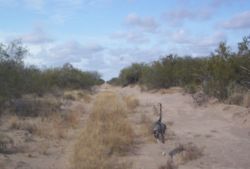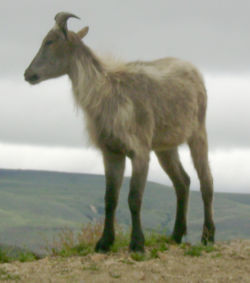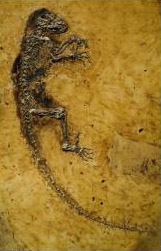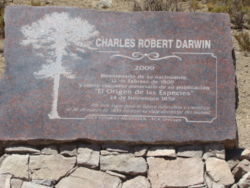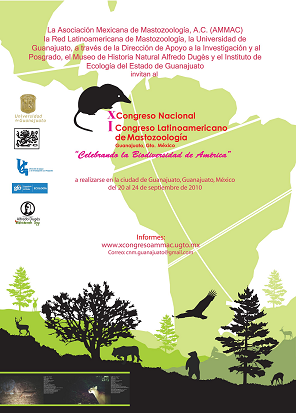IADIZA - GIB NOTICIAS
De Mendoza CONICET
INICIO
GRUPO
Historia
Mision
Objetivos
Gente
ACTIVIDADES
Investigacion
Publicaciones
Cursos
Difusion
RECURSOS
Estacion de campo
Laboratorio
Coleccion Animal
Bioterio
Sitios Web
NOTICIAS
INTERNATIONAL FEDERATION OF MAMMALOGISTS
CONTACTO
|
Darwin y sus reflecciones sobre las especies exóticas “. . . few countries have undergone more remarkable changes since the year 1535, when the first colonist of La Plata landed with seventy-two horses. The countless herds of horses, cattle, and sheep, have altered the whole aspect of the vegetation, but they have almost banished the guanaco, deer, and ostrich. Numberless other changes must likewise have taken place; the wild pig in some parts probably replaces the pecarri; packs of wild dogs may be heard howling on the wooded banks of the less frequented stream; and the common cat, altered into a large and fierce animal, inhabits rocky hills….” Charles Darwin, The Voyage of the Beagle, entry for September 19th, 1833 |
|
|
| ||||||||||||||||||||||||||
| - |
{ | style = "width : 100%; border: 0px solid # 000; text -align : left ; background- color: # FDFFFF ; vertical -align : top "align = "center" cellspacing = " 0 " cellpadding = "0 " |
{ | style = "width : 100%; border: 0px solid # 000; text -align : left ; background- color: # FBFFED align = "center" cellspacing = "2" cellpadding = " 0 " |
BIODIVERSITY 2010 </ p > Fire in the Pantanal [ http://www.laprensa.com.bo/noticias/8-7-2010/noticias/08-07-2010_549.php ] '12 environmental trends in South America ' [ http://www.ecologiayconservacion.com/2010/07/tendenciasambientedesarrollo2010/ ] A cradle of biodiversity Daimiel Tables [ http://www.elmundo.es/elmundo/2010/07/05/ciencia/1278324613.html ] ATLAS OF BIODIVERSITY RISK [ http://pensoft.net/newreleases/14595.htm ] SPECIAL : corridors , connectivity , climate change and social participation in conservation [ http://www.wiley.com/bw/vi.asp?ref=0888-8892&site=1 # 543 ] How many species are ?[ There http://news.sciencemag.org/sciencenow/2010/05/lifes-pageant-not-so-rich.html ] Politics is a key factor in Biodiversity [ http://www.ufz.de/index.php?en=19708 ] The Gran Chaco and deforestation [ http://www.ecoticias.com/eco-america/27881/noticias-medio-ambiente-medioambiente-medioambiental-ambiental-definicion-contaminacion-cambio-climatico-calentamiento -Global- impact- ecology -ecosystem - management -policy - legislation - responsibility- technical - education -sustainable - obama- greenpeace - co2- nations - united -health -engineering -Kyoto -Copenhagen- Mexico] IPBES , Intergovernmental Platform on Biodiversity and Ecosystem Services [ http://www.google.com/hostednews/afp/article/ALeqM5jqQKTTFcobXTdgdWzFtEui-Savvw ] life and miracles of biodiversity [ http://www.pagina12.com.ar/diario/ciencia/19-147210-2010-06-09.html ] ' EU and global biodiversity '[ http://biodiversity.europa.eu ] 40% of the global economy depends on the nature [ http://www.expansion.com/2010/05/25/empresas/1274815698.html ] Triathlon for the life of Darien [ http://www.censat.org/noticias/2010/5/24/Triatlon-por-la-vida-del-Darien/ ] Thousands of people connect with nature through the EU campaign [ http://europa-eu-un.com/articles/es/article_9774_es.htm ] Mining in Colombia: The great dilemma [ http://www.censat.org/noticias/2010/5/24/El-gran-dilema/ ] where species die [ http://www.pagina12.com.ar/diario/suplementos/futuro/13-2345-2010-05-23.html ] Lizards succumb to global warming [ http://www.losandes.com.ar/notas/2010/5/23/opinion-491565.asp ] The loss of species and the Man [ http://www.elpais.com/articulo/sociedad/pierden/especies/pierde/hombre/elpepusoc/20100515elpepusoc_4/Tes ] The 4% of global deforestation takes place in Mexico [ http://www.milenio.com/node/442859 ] Lizards Causing Climate Change to ' Wink Out of Existence [ http://news.sciencemag.org/sciencenow/2010/05/climate-change-causing-lizards-t.html?etoc ] Ignoring Nations Biodiversity Treaty, U.N. Says [ http://votacion2012.blogspot.com/2010/05/nations-ignoring-biodiversity-treaty-un.html ] The UN and the loss of biodiversity [ http://www.elpais.com/articulo/sociedad/ONU/advierte/perdida/biodiversidad/amenaza/vida/Tierra/elpepusoccie/20100510elpepusoc_3/Tes ] It's a microbial world [ http://www.nature.com/news/2010/100418/full/news.2010.190.html ] Biodiversity , definitions and concepts [ http://es.wikipedia.org/wiki/Biodiversidad ] Barometer for biodiversity [ http://www.conservation.org/newsroom/pressreleases/Pages/Cient % C3 % ADficos - propose -Bar % C3 % B3metro -Biodiversity - UICN.aspx ] The loss of biodiversity as E.O. Wilson [ http://www.unesco.org/new/es/media-services/single-view/news/edward_o_wilson_the_loss_of_biodiversity_is_a_tragedy/back/18278/ ] studies are needed for the effective protection of biodiversity [ http://www.informador.com.mx/mexico/2010/195213/6/faltan-estudios-para-la-eficaz-proteccion-de- la- biodiversidad.htm ] boomerang effect on Monsanto, in the United States [ http://www.ecoticias.com/alimentos/25162/noticias-comida-bebidas-alimentos-transgenicos-productos-agricultura-ganaderia-ecologicas-organicos- natural - environment- sustainable - environmentally-friendly -environmental and environmental ] Biodiversity loss is the biggest challenge [ http://www.abc.es/agencias/noticia.asp?noticia=348111 ] The Wichi [ http://www.caicyt.gov.ar/DILA/wichi ] Biofuels and food security -1- .doc The destruction of the Chaco A third of Europeans known biodiversity
Journal of Biogeography Editor 's Choice [ http://www.blackwellpublishing.com/pdf/JBI_march2010.pdf ] Frontiers of Biogeography [ http://www.biogeography.org/html/fb/FBv2i1.html ] Biogeography Bulletin of the Systematic & Evolutionary Biogeographical Association [ http://www.uac.pt/ ~ seba / files / Biogeography % 204.pdf ]
Millennium Assessment of Human Behavior [ http://www.esajournals.org/doi/pdf/10.1890/0012-9623-90.4.325 ] The white -nose syndrome [ http://www.batcon.org/index.php/what-we-do/white-nose-syndrome.html ] Neanderthals living in our genes [ http://www.pagina12.com.ar/diario/suplementos/futuro/13-2340-2010-05-15.html ] of Neanderthal genome DNA Sequence [ http://www.sciencemag.org/cgi/content/full/328/5979/710 ] We are more than we thought Neanderthals [ http://www.bbc.co.uk/mundo/ciencia_tecnologia/2010/05/100506_neandertales_estudio_lr.shtml ] Half of all primates in danger of extinction [ http://2010biodiversidad.blogspot.com/2010/02/la-mitad-de-los-primates-en-riesgo-de.html ] The mountain monkey study sheds light on the evolution of mammals [ http://2010biodiversidad.blogspot.com/2009/06/el-estudio-del-monito-del-monte-aporta.html ]
|

